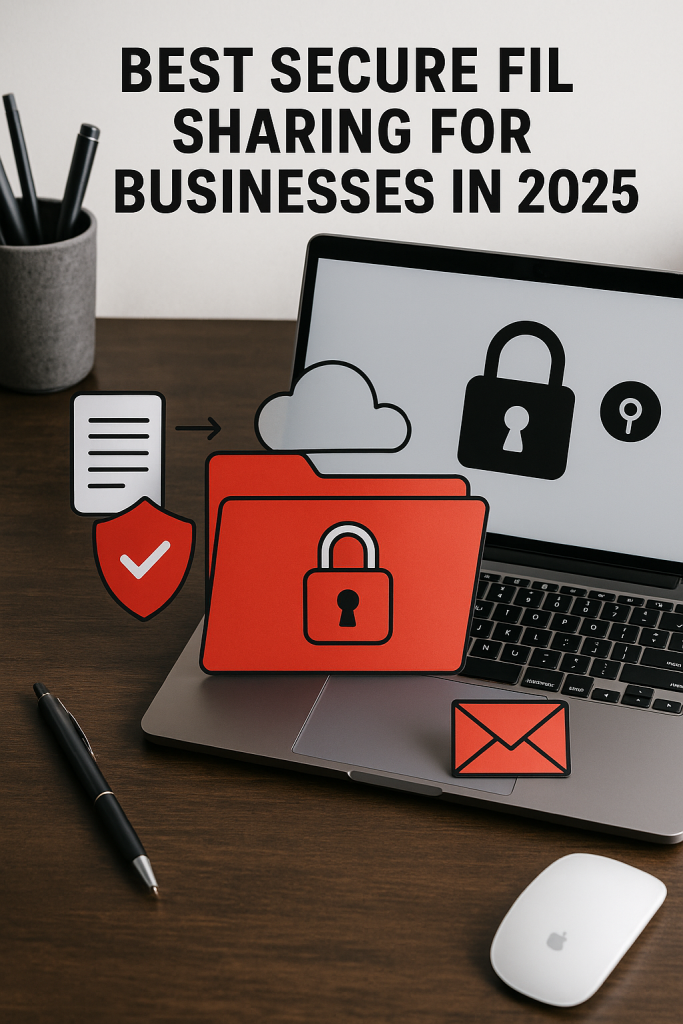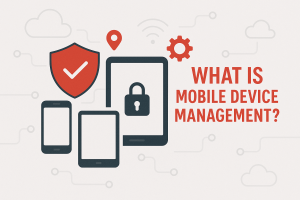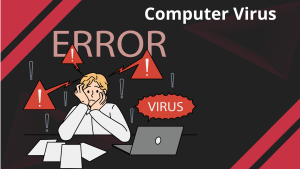In 2025, secure file sharing has transitioned from a convenience to a necessity. As cyber threats become increasingly advanced and regulations tighten, businesses can no longer afford to use outdated or unsecured tools. Whether you’re a startup sharing investor materials or a global team collaborating across borders, your solution must do more than store files, it must protect them, control access, and support compliance.
In this guide, we’ll explore the top secure file-sharing platforms for businesses in 2025, focusing on what really matters: encryption, usability, and real-world performance.
Want a solution that keeps your data safe and your team productive? Discover how Adivi can help.

Why Secure File Sharing Is Non-Negotiable in 2025
Rising Cyber Threats Targeting Business Data
Cyberattacks in 2025 are faster, more sophisticated, and more costly. With breaches averaging $4.5 million (IBM), unsecured file sharing, such as email attachments, has become a prime target for hackers.
Regulatory Pressures (GDPR, HIPAA, and Beyond)
Sharing files without proper safeguards risks not only breaches but also fines. Global laws, such as GDPR, HIPAA, and CPRA, require secure data handling. In 2025, compliance isn’t optional; it’s enforced.
Remote & Hybrid Workforces Need Scalable Solutions
With teams spread across cities and time zones, secure file sharing must be flexible and reliable. Businesses need encrypted, easy-to-use tools that work anywhere, without compromising security.
What to Look for in a Secure File Sharing Solution
End-to-End Encryption
End-to-end encryption ensures files are encrypted on the sender’s device and only decrypted on the recipient’s device; no one in between (not even the service provider) can view the contents. This is crucial for safeguarding sensitive business data during transit and storage, particularly in industries with stringent confidentiality requirements.
Access Controls and Permissions
Granular access control lets you define who can view, edit, download, or share specific files. Admins should be able to set user roles, expiration dates, and password-protected links to avoid unauthorized access. These controls reduce the risk of internal misuse and accidental exposure.
Audit Trails and Monitoring
A strong platform should log every file access, edit, or transfer, helping teams monitor user activity, detect anomalies, and maintain compliance. Audit trails provide transparency and accountability, which are essential for regulated industries such as finance and healthcare.
Integration With Existing Business Tools
Look for platforms that integrate seamlessly with the tools your team already uses, such as Google Workspace, Microsoft 365, Slack, Zoom, Salesforce, or project management apps. These integrations streamline workflows, minimize disruption, and increase adoption across departments.
Ease of Use and Collaboration Features
Security shouldn’t come at the cost of usability. Choose a solution with a clean interface, mobile access, file previews, real-time collaboration, and version control. If it’s too complex, employees will revert to riskier sharing methods.
Top Secure File Sharing Platforms for Businesses in 2025
Choosing the right platform means balancing security, usability, and integration. This section highlights the leading file-sharing tools trusted by businesses in 2025, comparing their strengths, limitations, and ideal use cases to help you find the best fit for your team.
How to Choose the Right Platform for Your Team
Assess Your Business Size and Risk Level
Startups may prioritize ease of use and affordability, while enterprises often need granular control, integrations, and advanced compliance features. Risk-prone industries like legal, healthcare, and finance should favor platforms with zero-knowledge encryption and full audit logs.
Industry Compliance Needs
Each industry has its own unique data protection rules. For example:
- Law firms need secure client communication and access logs.
- Healthcare requires HIPAA compliance and strong encryption.
- Finance demands strict auditability and multi-factor authentication.
Budget and Scalability Considerations
Free or low-cost plans may be sufficient for small teams, but they often lack enterprise-grade features. Ensure the platform you choose can scale with your team, adding users, storage, and features as you grow, without requiring a complete overhaul.
Final Thoughts
Secure file sharing is no longer a luxury; it has become a fundamental part of doing business. The right solution will not only protect your data but also support team productivity, ensure compliance, and adapt as your business evolves. Choose a platform that balances robust security with the usability your team needs to thrive.
Need help choosing or implementing the right secure file sharing solution?
Partner with Adivi to streamline your tech stack, safeguard your data, and ensure your file-sharing tools scale with your business.
FAQ
What is the most secure way to share business files?
Use a platform with end-to-end encryption, access controls, and audit logs to protect files in transit and at rest.
Can file sharing be compliant with GDPR or HIPAA?
Yes, choose platforms that offer compliance certifications and features like encryption, user permissions, and activity tracking.
What happens if someone shares a file by accident?
Most secure platforms allow link expiration, file access revocation, and real-time monitoring to quickly correct mistakes.
Are email attachments safe for sharing sensitive documents?
No. Email lacks strong encryption and tracking, making it risky for sensitive or regulated information.
How can I ensure only the right people access shared files?
Use role-based access, password-protected links, two-factor authentication, and user-specific permissions.


